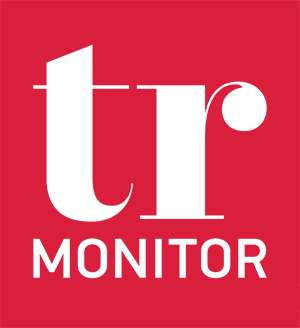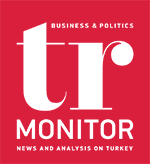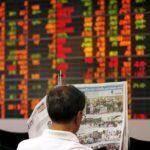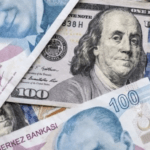Representatives of 10 sectors that accounted for 64% of Turkey’s exports of USD 231bn in January-November 2022 expect an economic contraction in the first half of 2023 (1H) and recovery in the second half of 2023 (2H). The Russia-Ukraine war, inflationist pressure, and the recession are the biggest risks to the global economy, while uncertainty due to the elections, and foreign exchange (FX) rates are the two most important problems in Turkey, according to sector representatives.
>> H1 TO BE ‘FOGGY’ FOR READY-TO-WEAR
A portion of exports during the pandemic have shifted to countries such as India and Pakistan as freight prices fell to pre-pandemic levels and companies started to have a difficulty in price matching, according to Mustafa Gultepe, Chairman of the Turkish Exporters’ Assembly (TIM) and Istanbul Apparel Exporters Association (IHKIB). The sector is expected to end the year with an export volume of USD 21bn. “A good portion of our exports are performed to the EU. The EUR/USD parity-driven loss in our sector reached USD 1.4bn in 11 months. If parity had hovered around the 2021 average, we would have ended 2022 with around USD 23bn in exports,” Gultepe said. The sector aims to increase its exports by 10% every year, at least. “Global economies will begin 2023 with concerns over the energy crisis and the recession. That’s why H1 will be difficult for exports. I expect the sector will rapidly recover in H2 when the economic recovery starts,” he added. The sector aims to reach a minimum export volume of USD 23bn in 2023.
11 MONTHS EXPORT LEVEL: USD 19.5BN
2023 EXPORT TARGET: USD 23BN
>> GOAL OF USD 35BN IN EXPORTS FOR 2023
Exports from the chemical industry are expected to exceed USD 33bn at the end of 2022. The hike in commodity prices and export unit value per kilogram positively affected exports, while the EUR/USD parity adversely affected the sector’s exports, according to Adil Pelister, Chairman of the Istanbul Chemical and Chemical Products Exporters Association (IKMIB). “The sector’s export unit value per kilogram rose by 29% from USD 0.91 to USD 1.17 in January-November, compared to the same period of the previous year. But its parity-driven loss reached around USD 2.2bn,” Pelister said. He also emphasized the stability of the FX rates. “The 2023 export target was set at USD 265bn in line with the Medium-Term Economic Program (OVP). We aim to raise our exports to over USD 35bn in this direction,” he noted.
11 MONTHS EXPORT LEVEL: USD 30.7BN
2023 EXPORT TARGET: USD 35BN
>> 2023 TO BE UNCERTAIN FOR AUTOMOTIVE
The automotive industry, which is estimated to end 2022 with 1.04-1.1 million units of exports and 1.38-1.47 million units of production in October, has revised the figures to 1 million units of exports and 1.36 million units of production, roughly in line with expectations, according to Cengiz Eroldu, Chairman of the Automotive Manufacturers Association (OSD). “Apart from difficulties in the European market, the decline in the EUR/USD parity adversely affected the sector and the microchip crisis negatively affected the supply chain throughout 2022. 2023 will be full of uncertainties,” Eroldu said. “We’ll announce our expectations for 2023 in January when our estimations on the global market and export markets are more clarified,” he added.
11 MONTHS EXPORT LEVEL: USD 27.8BN
2023 EXPORT TARGET: NOT SET
>> PRODUCTION ALIENATED
The surge in input prices caused by high inflation, FX rate hikes, and speculative stockpiling behaviors adversely affected agricultural production and consumption of food products, according to Ulku Karakus, President of the TOBB (Union of Chambers and Commodity Exchanges of Turkey) Agriculture Council. “Producers can’t make a sufficient profit. Moreover, considering the average of many years, production is alienated,” Karakus noted. The agriculture sector raised its exports by 16.4% to USD 30.8bn in January-November 2020, year-over-year. “Factors such as the recession expectation in Europe, which is among the most important export markets for us, the energy crisis, the course of the Russia-Ukraine war, animal diseases, climate change, and drought limit our estimations for 2023,” he said, stressing that planning for the future isn’t easy.
11 MONTHS EXPORT LEVEL: USD 30.8BN
2023 EXPORT TARGET: NOT SET
>> AIR CONDITIONING AIMS TO RAISE ITS GLOBAL SHARE TO 1.5%
The air conditioning sector increased its exports by 8.4% to USD 6.1bn in January-November, compared to the same period last year. The sector’s unit value per kilogram rose from USD 4.6 to USD 5.3, according to Mehmet Sanal, Chairman of the Turkish HVAC&R Exporters Association (ISIB). The sector expects to end 2022 with an export volume of USD 6.8bn. “Taking a 1.5% share of the global market is one of our most important targets for 2023. We also aim to become a sector that posts a foreign trade surplus in 2023,” Sanal added.
11 MONTHS EXPORT LEVEL: USD 6.1BN
2023 EXPORT TARGET: NOT SET
>> INVESTMENT RISK IN THE TEXTILE INDUSTRY
The textile sector exported goods worth USD 12bn between January and November. Istanbul Textile and Raw Materials Exporters’ Association (ITHIB) President Ahmet Oksuz said that the sector has shifted the export target of USD 15bn set for 2022 to 2023, “Since 2021, our industry has decided to invest over USD 3bn. However, increasing import pressure, especially as of late, does not only cause our factories to remain idle. It also directly affects our employment and investment decisions. Our industry has a foreign trade deficit for the first time. If additional protection mechanisms for our sector are not implemented, the increase in our employment will, unfortunately, slow. Investment decisions taken by our industry will be put on hold.”
11 MONTHS EXPORT LEVEL: USD 12BN
2023 EXPORT TARGET: USD 15BN
>> ELECTRONICS: QUALIFIED STAFF DEFICIT EXCEEDS 40%
In the January-November period of 2022, the electronics sector increased its exports by 6.7 percent compared to the same period last year, reaching USD 13.7bn. Chairman of the Board of the Turkish Electronics Manufacturers Association (TESID), Yaman Tunaoglu, said, “A high FX rate does not mean that exports will be high. The increase in TRY expenses due to inflation, difficulties in accessing loans, and high-interest expenses will make it difficult to sell abroad,” he said. Tunaoglu added that his expectations for 2023 are not very optimistic. “The investment environment is gaining strength with its reliability, predictability, and continuity. Arrangements should be made for improvement in procurement incentives and to resolve legal issues. There is a serious shortage of trained personnel all over the world,” he said, “Despite the young population in Turkey, this rate is around 40%. Research predicts that there will be a shortage of 84 million qualified workers around the world in 2030. It is critical that we create a learning environment for our young talent.”
11 MONTHS EXPORT LEVEL: USD 13.7BN
2023 EXPORT TARGET: NOT SET
>> FURNITURE: NEEDS INDUSTRY ORGANIZATION
The furniture industry reduced its export target, which was set at USD 6bn at the beginning of the year, to USD 5bn. Furniture Industry Businessmen Association (MOBSAD) President Nuri Gurcan stated that growth will be around 20% on the export side and that his industry is currently evaluating the Russian market. Contact with the Saudi Arabian market has also increased. Stating that they expect exports to reach USD 6bn in 2023, Gurcan said, “However, what we really need are better-organized industries. On the other hand, issues such as the FX rate, the recession in Europe, the election in our country, and the extent of the pandemic in China will guide our industry. Despite this, our capacity utilization rate is high. That’s why we need to expand in new production areas. However, there is a serious issue of scale in our industry. We need to solve this issue and focus on Organized Industrial Zones (OIZs).”
11 MONTHS EXPORT LEVEL: USD 4.4BN
2023 TARGET: USD 6BN
>> REAL ESTATE: DEMAND FOR MUTUAL FUNDS AND LAND WILL INCREASE
According to the Turkish Statistical Institute (TurkStat), the value of housing sales in the January-November period increased by 1.0% compared to the same period last year, amounting to USD 1.28m. In terms of land, the share of the land in the total sales increased from 5% to 10%. Mehmet Kalyoncu, Chairman of the Board of Directors of the Association of Real Estate Investors (GYODER), pointed out that 2022 was also a year in which the demand for shared offices increased, and listed other developments as follows: We are in a period when the biggest social housing project in history was implemented and accessibility to housing was an important topic of discussion.” Kalyoncu said that it is necessary to continue to be cautious considering increasing geopolitical risks, the ongoing Russia-Ukraine war, and upcoming elections. Adding that he expects the interest in the sector to continue this year, Kalyoncu said, “The imbalance between purchasing power and sale prices, as well as increasing construction costs and sales prices, are the main risks facing the industry. In this context, the demand for real estate investment funds and land will increase.”
>> MACHINERY SETS USD 27BN EXPORT TARGET FOR 2023
According to finalized 2021 TurkStat figures, the machinery industry created added value of TRY 92bn with a turnover of TRY 376bn from 51,062 enterprises and 441,719 direct employees. Stating that USD 20bn of exports were made in the first ten months of 2022, Turkish Machinery Federation (MAKFED) President Adnan Dalgakiran said, “We will approach our export target of USD 27bn for 2023. In Europe, where we make 60% of our exports, employment will be preserved in the sector in 2023 even though there is an expected recession, while a 5% contraction is predicted in turnover and investments. Therefore, our main goal will be to maintain our export growth in 2023, as well. For this reason, the importance we attach to other strategic markets outside of Europe will continue to increase.”
2022 10-MONTH EXPORT LEVEL: USD 20BN
2023 TARGET: USD 27BN









